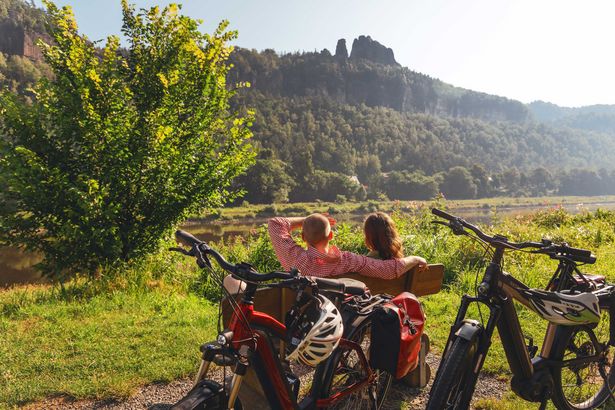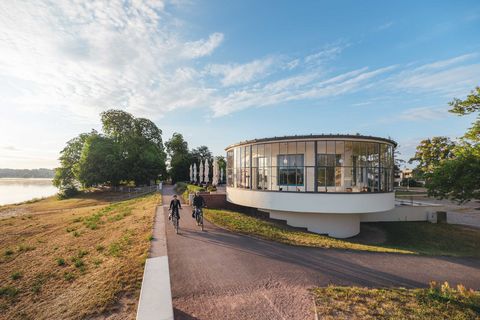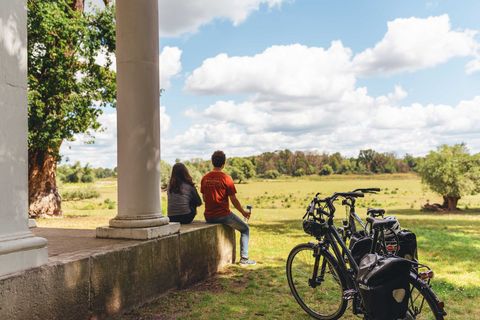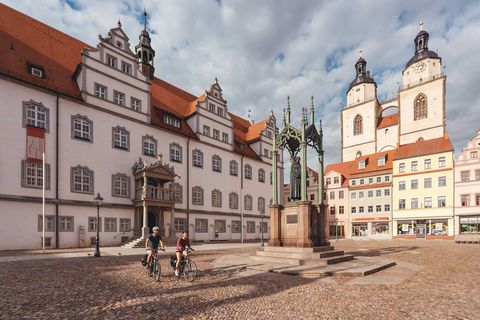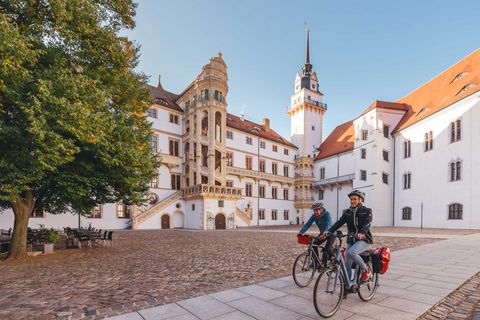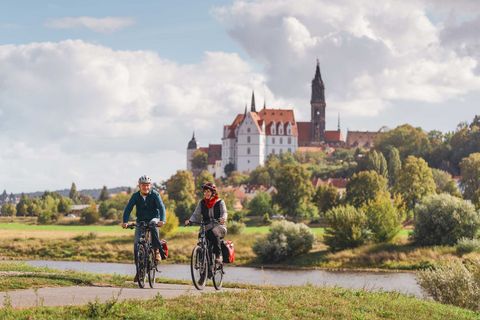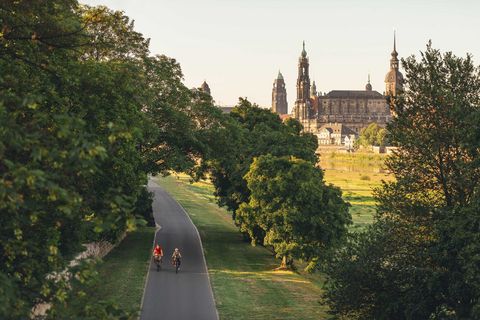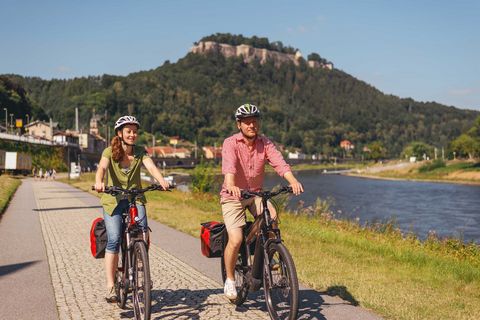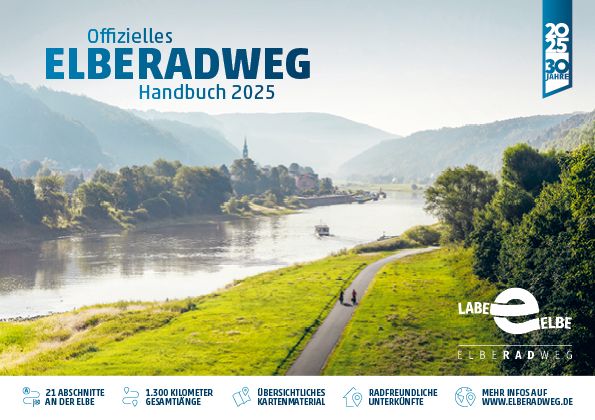From the Czech border near the village of Schöna, the Elbe Cycling Path runs past the rocky scenery of Saxon Switzerland National Park including Königstein Fortress, Felsenbühne Rathen Open Air Theatre and the famous Bastei Bridge. From Pirna, rolling hills and impressive manor houses line the way. After passing under the historic Loschwitz Bridge called the “Blaues Wunder” (Blue Wonder), the trail continues directly into the Dresden city centre.
The tour continues behind the capital city in a northwesterly direction between idyllic vineyards through the town of Radebeul, with a museum dedicated to the novelist Karl May, and then on to the town of Meißen, famous for its porcelain tradition, and the Saxon wine producing villages along the Elbe River. In Saxony’s cellars top white wines are made; a wine tasting here is worthwhile.
Further on in the direction of the town of Riesa the river banks widen and the view opens up to fields and pastureland. Now and then, storks or herons watching for prey at the riverside can be glimpsed. Quietly flowing in wide bends the river continues through the partly protected floodplain landscape via Strehla to the Renaissance and Reformation town of Torgau. Passing through the Dübener Heide Natural Park the trail continues to the towns of Lutherstadt Wittenberg and Dessau-Rosslau with its Bauhaus highlights. Then the Elbe Cycling Path leads via the towns of Magdeburg, Wittenberge, Lauenburg and the city of Hamburg to Cuxhaven where the Elbe River mouths into the North Sea.
Upstream, cyclists follow the Labe, which is the Czech name for the Elbe River, through the neighbouring country’s low mountain ranges. Many Elbe River cycling tourists choose to make a detour along the Vltava River to Prague to include another highlight on their route. Finally the tour ends in the Riesengebirge National Park where the Elbe River rises at an altitude of 1,300 metres.
